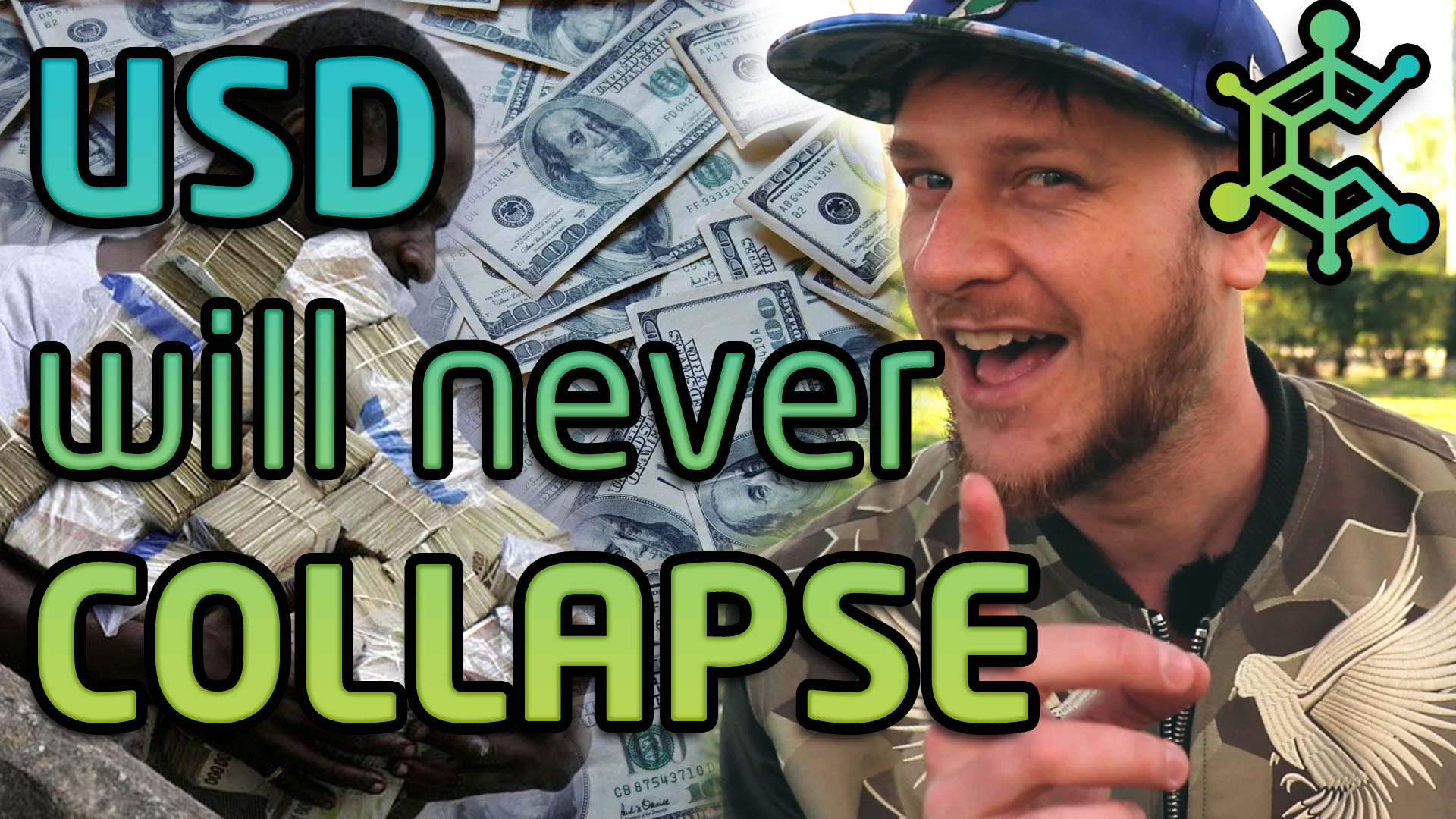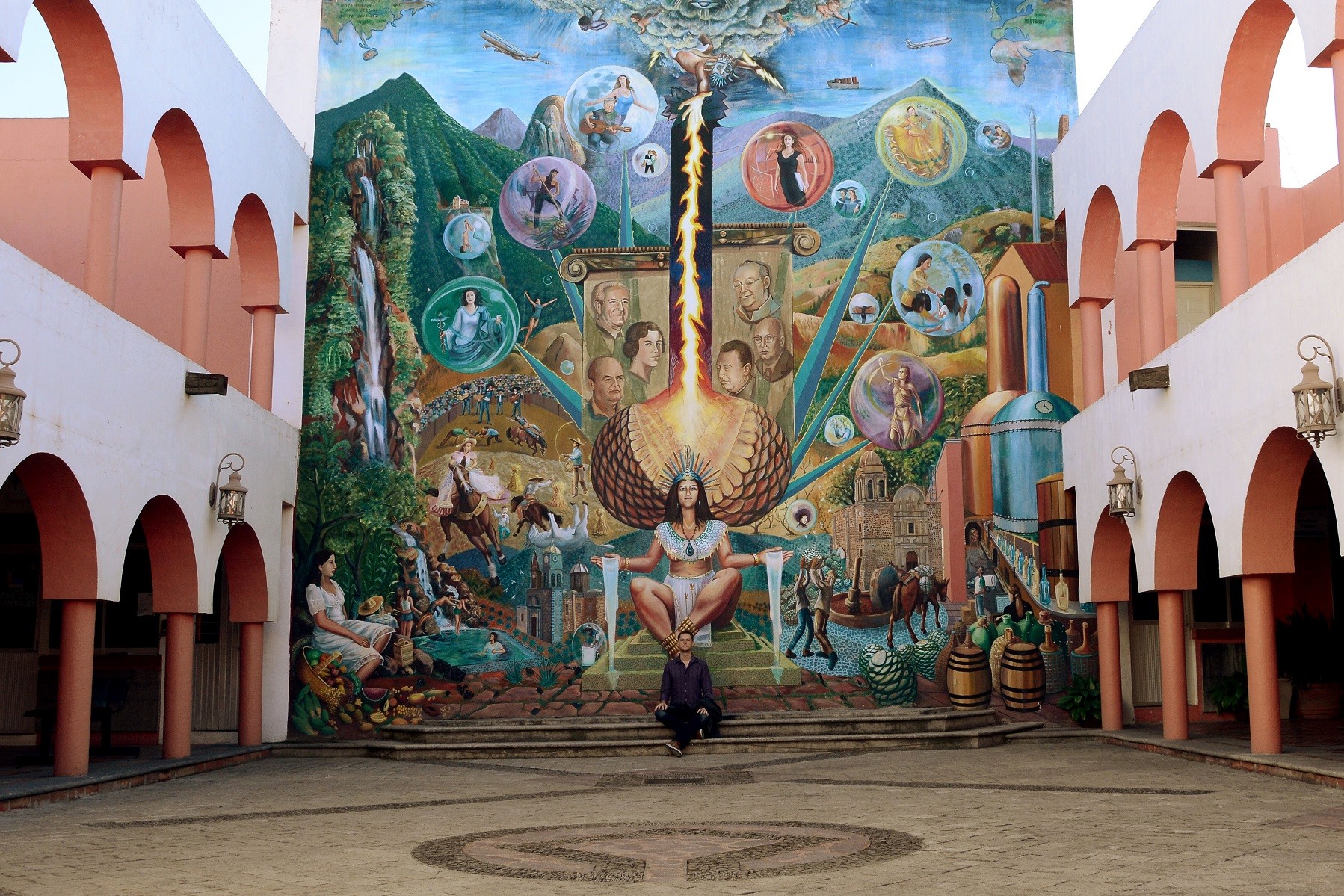
A lot of people have been saying for years that the US dollar is going to collapse, and that will cause another global financial crisis. That’s why you should hold onto your crypto for dear life. Is that really the case?
USD is still the official currency of other countries such as Ecuador, East Timor, El Salvador and Zimbabwe. It’s used for $100Bs of oil trade every year. Hundreds of millions of people pay their taxes in dollars, and despite the Federal Reserve and US Treasury printing trillions, it’s still valuable. The IMF has plans to create a system of e-dollars, and as early as 2008, political figures were discussing a new currency system known as Bretton Woods 2 – so there’s always a way out.
Scroll down to watch this episode of Cryptonomics!
Welcome to Cryptonomics, principles of cryptocurrency and investing. Thanks for liking, subscribing, being a crypto bro, checking the description and connecting with me on all social media.
I’d like to thank Builderofcastles for leaving a great comment on my video about why holding on to crypto no matter what is a bad idea. Builder made a lot of interesting points, but I’d like to focus on this part specifically:
Dollar Collapse – its coming. When? Don’t know, but all signs point to the edge of hyper inflation. When the dollar starts going, you won’t have much time to buy [cryptocurrency]… and there might not be much to buy.
The Dollar Collapse
In case you’re not familiar with the case for the dollar collapse, it goes like this:
The Federal Reserve and the US Treasury have been printing a lot of money for a long time. After the 2008 global financial crisis, they saw an opportunity and started a program of “quantitative easing”. That’s a fancy term for “printing a buttload of money”. From 2008 to 2015, the base money supply more than quadrupled, going from 900 billion to over 4 trillion.
After all that money printing, people who were watching thought that it would mean the dollar would lose a lot of its value, perhaps going into hyperinflation like the Zimbabwe dollar or the Venezuelan bolívar. But here we are in 2019, and despite the dollar losing some value, it is still the reserve currency of the world, and many countries still look to it in times of trouble.
If you want some more info on this, I recommend checking out the first Zeitgeist film, and the cartoon “The American Dream”.
Many intelligent people have predicted a dollar collapse – but maybe they’re being too critical and overlooking what the dollar has in its favour. So what does it have going for it?
In The Dollar’s Favour
The perception of value
The dollar is accepted in many countries around the world, and in many countries outside the US, such as Ecuador, East Timor, El Salvador and Zimbabwe, the dollar is the currency, officially or unofficially. In Cambodia, dollars are seen so much as a symbol of wealth that Chinese Cambodians will burn false dollars on Qingming, ancestor day, to send to their fallen loved ones in the underworld. Countries don’t do that with Australian dollars or Canadian dollars. A few countries do use euros outside the EU, but mainly countries turn to the dollar.
Dollar bears say those dollars are one day all going to come back to the USA, and suddenly they would be so concentrated that people would realise how worthless they were.
One day, perhaps. But when they do, we may be looking at a very different world. For now, it seems the idea of the dollar as a safe haven is very fixed, and that’s a key part of what sustains its value. It would take a huge shift or a lot of time for that to change. Of course, if that changes, then people who have some precious metals or crypto are likely to be in a very good position.
Base money
When it comes to the supply of base currency US dollars, it has actually reduced in the last couple of years. The supply peaked at 4 trillion, and is now down around 3.3 trillion.
Bears’ track record
Look back at these predictions from the bears. People have been predicting a dollar collapse, or something like it, for maybe 30 years. But hasn’t happened, not like they said.
In 1980, author and investor Doug Casey appeared on Donahue, predicting a crash and gold going to $3400 an ounce. He was pretty certain, enough to name figures, but it just didn’t happen the way he said it would.
Don’t think I’m saying you shouldn’t listen to guys like Doug Casey, Jeff Berwick, Jim Rogers, Jim Rickards… These are all smart people, contrarians who look for ways to take advantage. So listen to them, take their knowledge on board, but be wary of doomsday scenarios. There will literally always be someone to tell you that the sky is falling.
Innovation props up failing currency
There’s a lot of regulation in the USA. You need a licence just to cut or braid someone’s hair. Even so, the economy continues to advance in one way or another. People keep finding ways to innovate within the cracks, finding more efficient ways to do things.
For example, Uber, Lyft, AirBNB, all of these have brought down costs. Every time one of these innovations pops up, dollars end up being worth more in certain scenarios. That kind of innovation is likely to continue. With things like AI, self-driving cars and general automation crossing the horizon, that’s going to keep pushing it up.
The Petrodollar
After Nixon took the dollar off the gold standard, the US negotiated with Saudi Arabia, informally agreeing to price and trade oil in dollars.
Many members of OPEC trade oil in dollars, and If they don’t have dollars, they need to buy them in order to get oil, pumping up the demand. Some members of OPEC are now trading in Chinese renminbi rather than dollars. Even so, every year hundreds of millions of dollars are traded for oil between OPEC nations every year.
Pay your taxes
The tax dollar is also strong. 100s of millions of people in the USA pay taxes in one form or another, and many of them even claim to be proud to pay taxes, an unusual claim to say the least. As long as people are willing to pay taxes, that upholds the almighty dollar.
Keep the good times rolling
The IMF released an article in February 2019 talking about negative interest rates. The thesis is to create a two currency standard – regular dollars and electronic dollars. Regular dollars would be worth 3% less every year compared to e-dollars. The dollar didn’t collapse when they changed to Bretton Woods in 1944… then an informal petrodollar in 1971… so is it likely to collapse when they introduce this new standard?
For years there have been rumours for years of a North American Union, combining Canada, the US and Mexico. In that case, a new currency, the Amero, would replace the loonie, the dollar and the peso.
Similarly, on 26 September 2008, French President Nicolas Sarkozy said, “we must rethink the financial system from scratch, as at Bretton Woods.” In fact, Bretton Woods Part 2 has been suggested by economists as early as 2003.
From the perspective of the moneymakers, it doesn’t need to be a perfect, sustainable system. It just has to be good enough to last for 30-40 years, to keep the good times rolling.
They’re not out of tricks – they still have aces up their sleeves. Maybe those aces are a little dirty and sweaty, but they’re there.
The upshot – win or win
I made the video saying HODL is for chumps… I wasn’t saying that you should sell all your crypto, just that when the crypto goes up or down, you shouldn’t hold it religiously, and to think about asset allocation, especially in good times.
If you were 100% certain that there would be a dollar collapse, you might put all of your money into crypto and precious metals, or find some other way to bet against the dollar. I was certain about it in 2011, and I put most of my wealth into gold at an all time high, buying at around $1800 an ounce. It wasn’t the right move.
The idea is to form a strategy assuming one does not know everything that is going to happen, or make a strategy that works even if one is mistake wrong.
The case is that a dollar collapse is unknown – it might happen, it might not. At the very least, even when its managers inflate it so hard it looks like they want it to die, it hasn’t died.
If you’ve ever played chess seriously, you know the idea of a fork. You get your opponent in a spot where you are going to benefit no matter what he does. Maybe he’ll lose his queen, maybe he’ll lose a rook, but you’re going to capture a piece either way. Life is similar. If you plan and act carefully, you can improve your situation even if things don’t go exactly as you wanted. You win a little, or you win a lot.
That’s the challenge. How can you structure your life so that you and others around you can end up better off, regardless of events out of your control?
Thank you
Thanks for listening, watching and reading Cryptonomics. Remember, have a look around you. There’s a lot of people on this very day who won’t have a chance to see a blue sky or breathe fresh air, so take advantage, and stay grateful!
You can listen and subscribe on Anchor and other podcasting services here:









